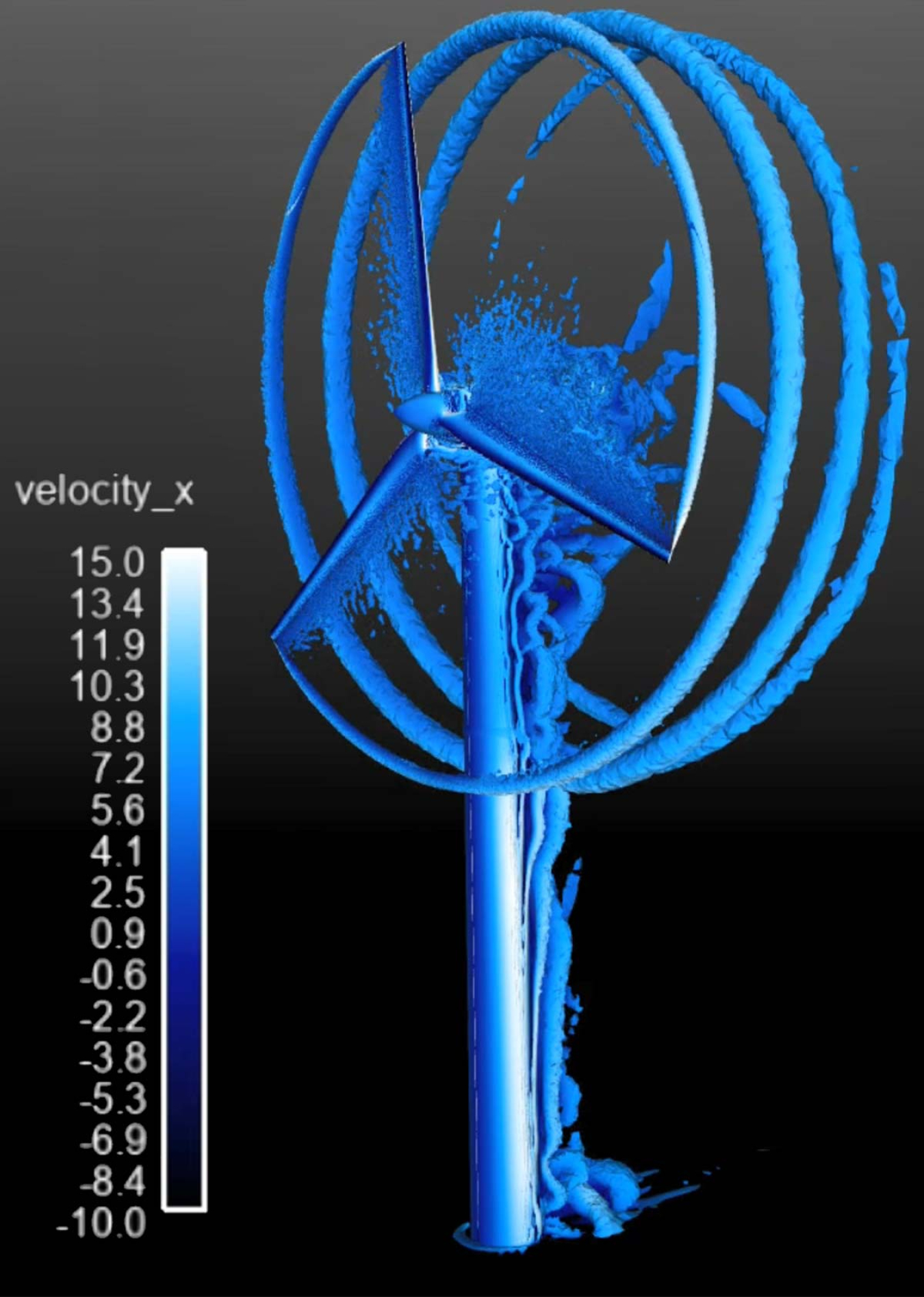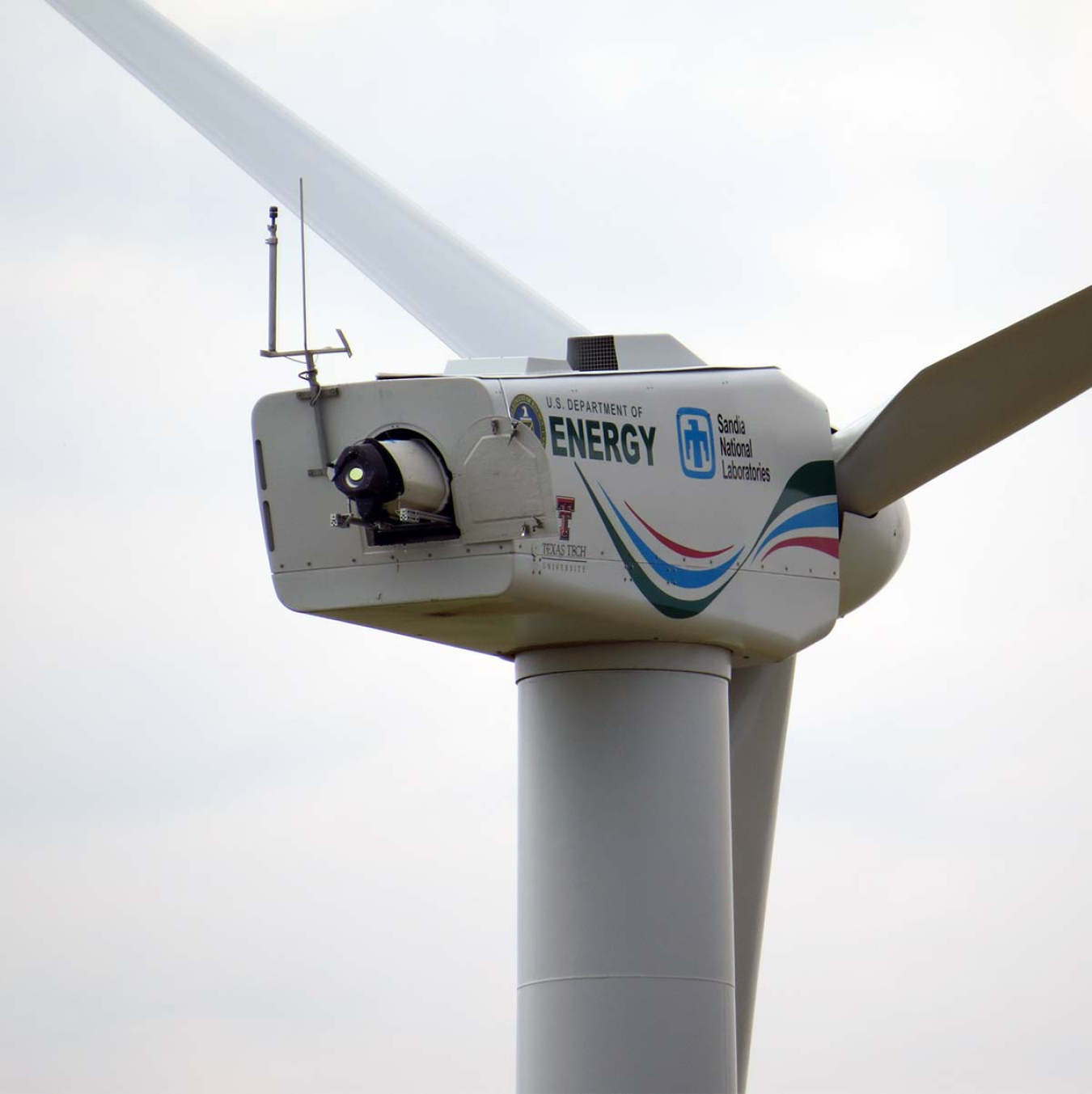Accurate modeling of interactions between turbines, turbulence, and wakes indicates potential for lower wind plant costs and improved efficiency.
Wind Energy Technologies Office
May 20, 2019Computer modeling of interactions between turbines, turbulence, and wakes holds potential for wind plant improvements
Researchers at Sandia National Laboratories (Sandia) and National Renewable Energy Laboratory (NREL) are using cutting-edge national supercomputing resources to develop an open-source computational fluid dynamics (CFD) code that simulates wind plants with greater accuracy than previously possible. This Nalu-Wind code is emerging as the foundation for next-generation wind power plant flow modeling, enabling operators and developers to predict blade health, power production, and plant costs more accurately to ultimately reduce the overall cost of wind energy.
A recent test used high-resolution wind plant data from the Sandia Scaled Wind Farm Technology (SWiFT) facility to validate a Nalu-Wind simulation. The test indicated that Nalu-Wind can effectively model the turbulence in the air between and around wind turbines—an important step toward simulating wind plants. Simulations performed using Nalu-Wind could also make it possible to explore new technologies more quickly and cost-effectively than traditional field testing, translating R&D into high-value wind plants across the country.
More accurate, validated models could improve wind plants’ performance, efficiency, and reliability while lowering the cost of wind energy. By validating that Nalu-Wind accurately simulates how turbines interact, Sandia and NREL’s research is the first step toward a tool that could be used by industry.
“Nalu-Wind is about optimization to lower the cost and improve efficiency,” explained Brian Naughton, a field experiment engineer at Sandia. “The SWiFT site provides us with the unique measurements capabilities needed for Nalu-Wind validation.”

Wind turbine velocities modeled with Nalu-Wind. Image by Matt Barone, Stefan Domino, and Chris Brune, Sandia

SpinnerLidar instrument installed on a SWiFT turbine. Photo by Sandia
The SWiFT facility, located at Texas Tech University’s National Wind Institute Research Center in Lubbock, Texas, is the first public facility to measure performance of multiple research-scale turbines in a wind plant environment. Each turbine at the SWiFT site has a controller that allows researchers to look at how downwind turbines respond to the wake of their upwind neighbors and compare experimental results against Nalu-Wind simulations.
This test was the first time the Nalu-Wind code was used to simulate the behavior of the SWiFT wind turbines. Future simulations will compare the potential wake characteristics produced by two different wind turbine rotors before being confirmed through experiments.
Results of this collaborative undertaking will be presented at the American Society of Mechanical Engineers Joint Fluids Engineering conference in July. The Nalu-Wind work is part of DOE’s Atmosphere to Electrons initiative, a multiyear, multi-stakeholder R&D effort focused on improving wind plant performance and mitigating risk and uncertainty to achieve substantial reduction in the cost of wind energy production.

